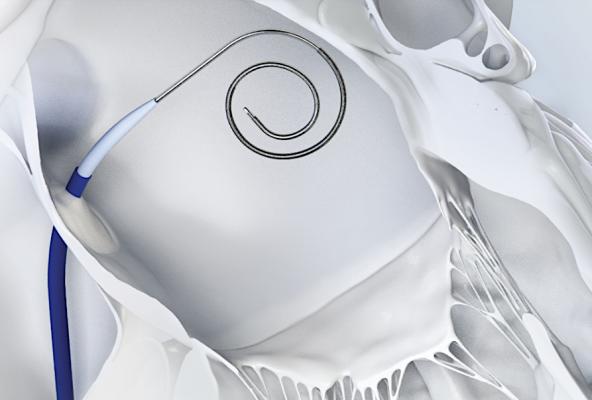
December 1, 2020 — A recent publication demonstrated procedural efficiency for MitraClip transcatheter mitral valve repair (TMVR) with use of the Baylis VersaCross RF Transseptal Solution, reporting guide delivery from femoral access in under 7.5 minutes.[1,2]
The VersaCross solution features a single radiofrequency (RF)-tipped wire used to introduce the transseptal sheath into the superior vena cava (SVC), gain transseptal access and act as an exchange wire in the left atrium to facilitate MitraClip Guide delivery. Typically, this process involves exchanging multiple devices to achieve and maintain transseptal access. The VersaCross platform is the world's first, exchangeless solution for access-to-delivery of left heart therapy devices.
The publication, titled "Initial Clinical Experience with VersaCross Transseptal System for Transcatheter Mitral Valve Repair" was published in Catheterization and Cardiovascular Interventions, in November 2020.[1] The research was led by Anita W. Asgar, M.D., interventional cardiologist in the Cardiology Division of the Montreal Heart Institute.
Initial findings concluded procedural efficiency, citing 3.3 minutes to gain transseptal access and a subsequent 3.8 minutes to achieve MitraClip Guide delivery, with a 100% success rate. Previously published data cited 16 minutes to gain transseptal access with use of other transseptal solutions.[3] Additionally, researchers noted a reduced number of wire exchanges required, with the ability to reposition puncture location on the fossa ovalis without the need to rewire.
"The VersaCross platform has improved efficiency in my practice. The exchangeless technology allows me to perform precise puncture and delivery of MitraClip guide in under 8 minutes, allowing for safer, more efficient and predictable procedures for my patients," Asgar said.
The VersaCross solution can be customized to meet physician preference and the patient's needs. This includes J-Tip and Pigtail wire configurations, as well as tailor-built fixed and steerable sheath options.
"Working closely with leading physicians, we identified a clinical need for technology that allows for controlled precision and secure, effortless delivery while minimizing procedural steps. We are thrilled to learn that these researchers experienced what we set out to design to meet the needs of both physicians and patients," said J.P. Urbanski, Ph.D., who led the development of the VersaCross solution at Baylis Medical.
Baylis announced Sept. 1, 2020, the first clinical use of the VersaCross Steerable Access Solution, performed at the University of California, San Francisco (UCSF).
Launched in 2019, the VersaCross is the first all-in-one solution for left-heart access-to-delivery. The device acts as a puncture device, an anchor in the left-atrium and a sturdy exchange rail to facilitate sheath exchange. The newest addition to the VersaCross Transseptal Platform combines the VersaCross RF wire with a steerable sheath and uses radiofrequency (RF) ablation to puncture the septum.
For more information: www.baylismedical.com
References:
2. Using the VersaCross RF Transseptal Solution from femoral access; based on 3.3 min for TSP and 3.8 min for subsequent MitraClip guide exchange.


 April 24, 2024
April 24, 2024 








